Global supply chains are under more pressure than ever before. From rising freight costs to ongoing labour shortages and geopolitical disruptions, businesses are being forced to rethink the way they manage logistics. Traditional systems are no longer sufficient to handle this complexity. Enter digital supply chain platforms,intelligent systems designed to bring visibility, control, and resilience to logistics operations.
Responding to Rising Freight Costs
One of the most pressing challenges in today’s supply chain landscape is the continuous increase in freight costs. Factors like fuel price volatility, driver shortages, and regulatory changes are pushing transportation expenses higher. Digital supply chain platforms allow businesses to take a proactive approach. With automated shipment tendering, companies can match loads to the most cost-effective carriers, avoid inflated spot rates, and optimise routes for fuel efficiency. These platforms also provide insights into cost per shipment, helping finance teams plan and control budgets with greater accuracy.

Labour Shortages and Automation
Warehouses and logistics companies across the globe are facing workforce shortages, affecting fulfilment speed and reliability. Digital tools help fill these gaps by automating repetitive tasks, such as load scheduling, document management, and vehicle assignments. With fewer manual touchpoints, companies can maintain operational continuity even with limited human resources. Automating these workflows also minimises errors and improves turnaround times, ensuring that customers receive their goods on time.
Monitoring Critical KPIs
Keeping an eye on metrics such as time-to-deliver, turnaround time, and on-time delivery is essential for navigating today’s logistics landscape. Digital platforms offer unified dashboards where businesses can monitor these KPIs in real time. They not only track daily performance but also provide historical data, allowing companies to identify patterns and make strategic decisions based on facts, not assumptions.
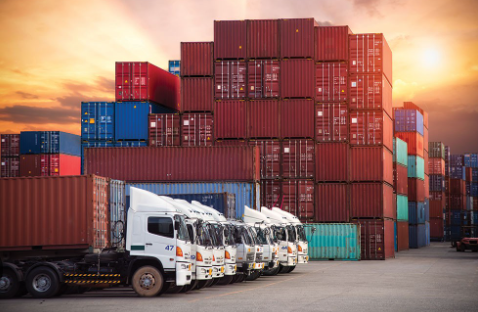
Building Resilience with Data-Driven Decisions
Perhaps the most valuable benefit of digital logistics platforms is their ability to make supply chains more resilient. By integrating data from multiple sources—transporters, warehouses, and consignees—businesses can predict delays, reroute shipments, and ensure smoother handovers. This flexibility is crucial in a world where unexpected disruptions are the new normal.
Conclusion
Adaptability is no longer a luxury—it’s a requirement. Digital supply chain platforms enable businesses to tackle modern challenges head-on by improving efficiency, lowering costs, and strengthening operations.
Discover how Truck It In can support your transformation. Visit www.truckitin.ai to learn more!
Introduction
In today’s fast-paced logistics environment, supply chains are more volatile than ever. Disruptions such as fluctuating demand, geopolitical tensions, and unpredictable weather conditions can significantly impact logistics operations. Amid these challenges, route optimisation has become a critical strategy to maintain efficiency and keep logistics KPIs on track.
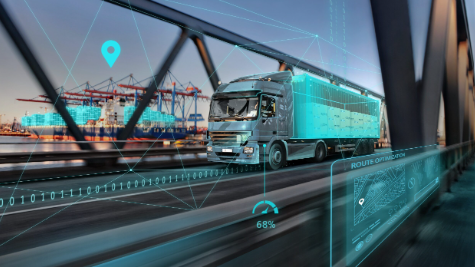
Enhancing Driver Productivity
Effective route management directly influences driver productivity. By optimising routes, companies can minimise idle time, reduce fuel consumption, and ensure that drivers spend more time on productive tasks. Advanced route optimisation tools can also help in assigning the right driver to the right job, further enhancing productivity.
Improving Transit Time
Transit time is a vital KPI in logistics. Optimised routes help reduce travel time, avoid congested areas, and ensure timely deliveries. With real-time insights into traffic conditions and potential roadblocks, logistics managers can adjust routes dynamically to maintain delivery schedules and meet customer expectations.

Addressing Abnormal Stoppages
Abnormal stoppages can disrupt supply chains and increase costs. With route optimisation, logistics teams gain visibility into the exact location and status of shipments. This visibility helps identify and address delays promptly, ensuring that any issues are resolved before they escalate into significant problems.
Conclusion
Route optimisation is not just about finding the shortest path from point A to point B. It is about creating a flexible and resilient supply chain that can withstand volatility and deliver consistent results.
Stay ahead of logistics challenges with Truck It In’s innovative solutions. Learn how to tackle global supply chain problems and optimise your KPIs at www.truckitin.ai.
The Load Booking Dilemma
Global supply chain disruptions have placed immense pressure on logistics operations. Delayed shipments, fluctuating demand, and unpredictable market conditions have made traditional load booking methods increasingly ineffective. Manual sourcing processes, limited transporter options, and a lack of real-time visibility exacerbate these challenges, resulting in unmet KPIs like truck availability rate and cost per mile.
The Role of Digital Platforms
Digital platforms are transforming how businesses approach load booking. By providing a centralised and automated solution, these platforms streamline the transport sourcing process, reducing reliance on time-consuming phone calls and emails. With real-time updates and an expanded pool of pre-approved transporters, businesses can ensure that trucks are available exactly when and where they’re needed.
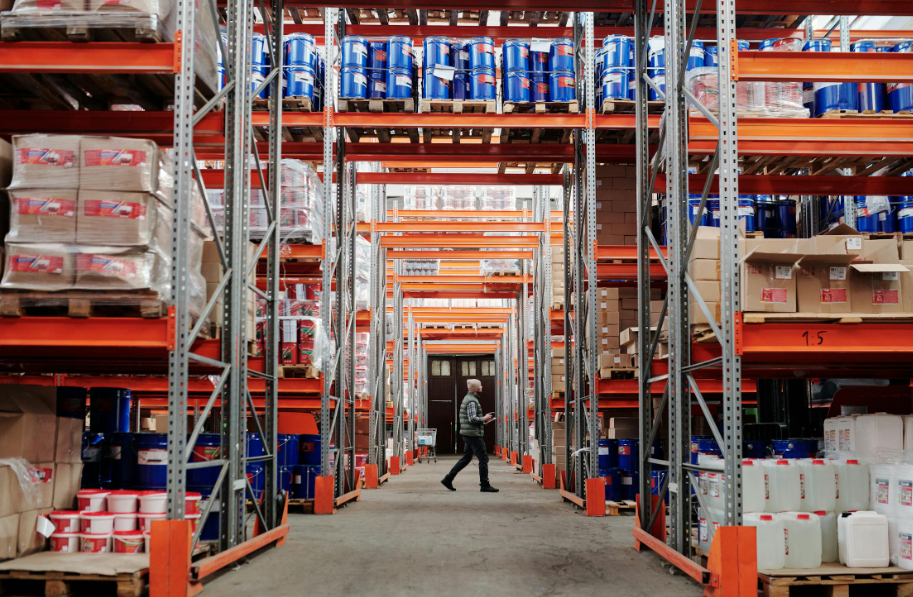
Simplifying Transport Sourcing
Advanced digital platforms enable shippers to post load requirements, review competitive bids, and confirm bookings instantly. This not only simplifies the sourcing process but also ensures cost efficiency by fostering competition among transporters. By leveraging data-driven tools, businesses can make informed decisions that optimise load allocation and reduce operational costs.

Meeting Critical KPIs
Truck Availability Rate: Digital platforms offer access to an extensive network of transporters, increasing the likelihood of finding the right vehicle for every load. Real-time tracking and automated matching minimise downtime and ensure resources are optimally utilised.
Cost Per Mile: Transparent bidding systems allow businesses to secure the best rates for transport, reducing overall cost per mile without compromising service quality. Historical data and predictive analytics also help identify cost-saving opportunities.
The Path Forward
Amid global supply chain disruptions, embracing digitalisation is no longer optional—it’s essential. By leveraging cutting-edge platforms, businesses can overcome load booking challenges, improve operational resilience, and stay ahead in an unpredictable logistics landscape.
Drive Efficiency with Digital Solutions
Stay ahead of logistics challenges with Truck It In’s innovative solutions. Learn how to tackle global supply chain problems and optimise your KPIs at www.truckitin.ai.
The Cost of Delivery Errors
Delivery errors, whether caused by incorrect documentation, damaged goods, or delayed confirmations, can lead to significant financial losses and strained customer relationships. These challenges highlight the need for robust, real-time proof of delivery (ePOD) systems that address inefficiencies and improve critical KPIs such as on-time acceptance and damage rates.
Real-Time ePOD for Enhanced Accuracy
Immediate ePOD submissions eliminate the risks associated with manual paperwork and delayed reporting. By providing digital proof of delivery, including photos and timestamps, businesses can ensure accurate and timely updates for every shipment. This not only prevents disputes but also builds trust with customers through transparent operations.
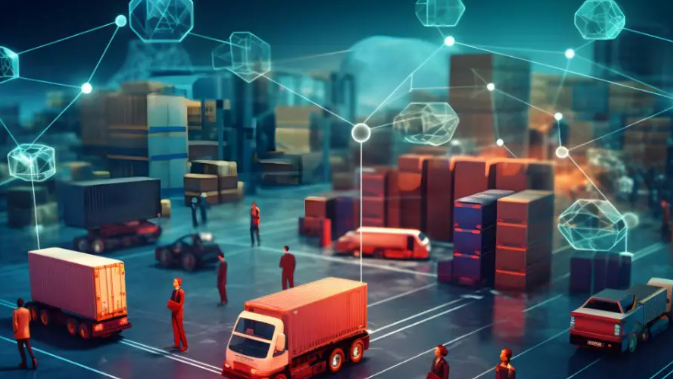
Tracking Offloading Efficiency
Delivery performance is not just about getting goods to their destination—it’s also about efficient offloading. Advanced ePOD tools enable businesses to monitor offloading times, assess unloading conditions, and ensure goods are handled properly. This reduces the risk of damage and optimises KPIs such as delivery accuracy and turnaround times.
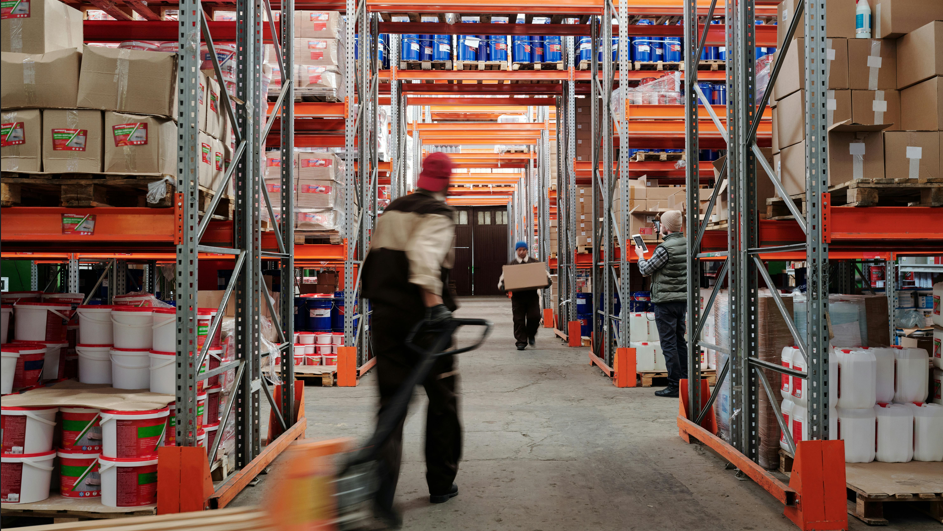
Resolving Discrepancies with Data Insights
Digital proof of delivery systems allow for SKU-level reporting, providing detailed insights into shortages, damages, or delivery exceptions. This level of granularity enables businesses to resolve discrepancies faster and improve accountability across their supply chain.
Build a Stronger Delivery Network
Combat delivery challenges with real-time proof of delivery solutions that enhance accuracy and customer satisfaction. Stay ahead of logistics challenges with Truck It In’s innovative solutions. Learn how to tackle global supply chain problems and optimise your KPIs at www.truckitin.ai .
The Challenge of Yard Delays
Yard operations are a critical component of the supply chain, yet inefficiencies such as prolonged gate queues, delayed dock assignments and manual tracking processes often lead to increased costs and missed deadlines. These challenges not only disrupt operations but also impact KPIs like dock utilisation and turnaround time, directly influencing overall productivity.
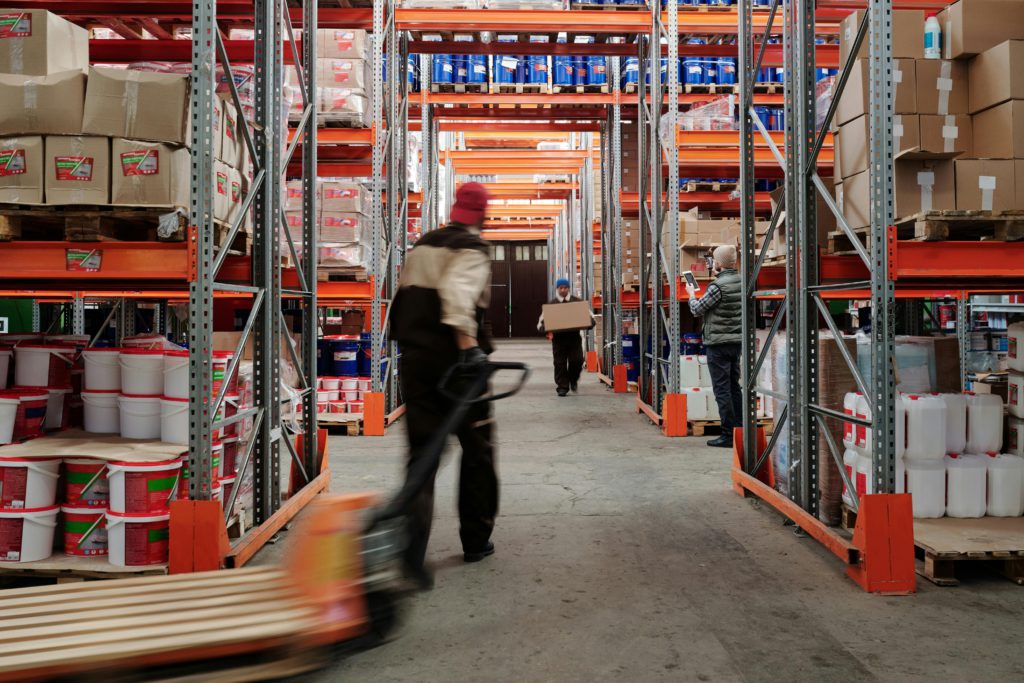
Advanced Tracking for Gate-In and Dock Operations
Smarter yard management begins with tools that track key activities such as Gate-In and Dock-In/Out in real time. These tools provide precise data on vehicle entry, dock allocation, and departure, ensuring smooth transitions between stages. With this level of visibility, businesses can preempt bottlenecks and maintain a steady flow of operations.
Optimising Load Times with Automation
Automation is revolutionising load management by replacing manual processes with real-time monitoring and alerts. Automated systems ensure that vehicles are loaded and unloaded efficiently, minimising idle times and improving dock turnover rates. This efficiency directly impacts KPIs like average dwell time and load accuracy, driving cost savings and improved service levels.
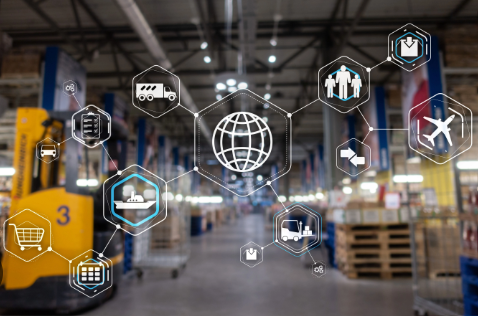
Leveraging Data for Yard Efficiency
Data analytics play a pivotal role in yard management. By analysing patterns and identifying delays, businesses can optimise schedules, improve resource allocation, and enhance overall throughput. Tracking metrics such as average gate wait time and dock assignment speed allows managers to pinpoint inefficiencies and implement corrective actions.
Stay Ahead of Yard Challenges
Embrace the future of yard management with smarter tools designed to optimise every step of your operations. Stay ahead of logistics challenges with Truck It In’s innovative solutions. Learn how to tackle global supply chain problems and optimise your KPIs at www.truckitin.ai.
The logistics industry plays a crucial role in global trade, ensuring that goods are transported efficiently and securely from one location to another. In recent years, technology has been a driving force in transforming the industry, enabling companies to improve their performance metrics and forge stronger relationships with customers. Two key factors in this transformation are trust and transparency. By leveraging technology to provide real-time visibility, accurate information, and secure transactions, logistics companies can build trust with their customers and create long-lasting partnerships. The integration of technology has become paramount in building, enhancing, and maintaining these vital connections.
In this blog, we’ll explore how the adoption of Customer Relationship Management (CRM) systems, mobile apps, and portals is not just digitising relationships but also streamlining coordination in the logistics industry.
The Significance of Trust and Transparency
In logistics, trust is everything. Customers rely on timely deliveries, accurate information, and consistent service. To build this trust, transparency is key. When customers have access to real-time information about their shipments, schedules, and billing, they gain confidence in your services.
Technology has been a game-changer for the industry, enabling companies to streamline their operations, improve efficiency, and reduce costs. By using blockchain, companies can track the movement of goods, verify their authenticity, and ensure that they are delivered to the right place at the right time. Real-time analytics enable companies to gain insights into their operations, identify bottlenecks, and make data-driven decisions to improve efficiency and customer service.
The Role of Technology in Logistics
1. Customer Relationship Management (CRM) Systems
CRM systems are at the heart of customer-centric logistics operations. A study by Salesforce found that 88% of buyers say the experience a company provides matters as much as products or services. CRM systems help streamline communication and collaboration between different departments within a logistics company. This leads to better coordination, improved efficiency, and enhanced customer service. A centralized hub that unifies all communication channels, data sharing, and business metrics creates a sense of transparency within departments, such as between sales, account managers, and the supply chain.
These systems enable companies to maintain comprehensive records of their interactions with customers, from initial inquiries to ongoing support. Here’s how CRM systems enhance trust and transparency:
- 360-Degree View: A CRM system provides a holistic view of each customer’s history and preferences, allowing logistics providers to offer personalized services and anticipate needs.
- Communication Tracking: CRM systems record all customer communications, ensuring that nothing falls through the cracks and that promises are kept. Another study by Gartner found that 70% of customers prefer to self-service their logistics needs online.
- Data-Driven Insights: By analyzing data within the CRM, logistics companies can identify trends, optimize routes, and enhance service quality.
2. Mobile Apps
Mobile apps have revolutionized logistics operations by putting information at everyone’s fingertips, from drivers to customers. A study by Zebra Technologies found that 88% of logistics professionals believe that mobile apps are essential for improving operational efficiency. Here’s how mobile apps contribute to trust and transparency:
- Real-Time Tracking: Customers can track their shipments in real-time, providing visibility into the status of their deliveries.
- Document Scanning: Drivers can use mobile apps to scan and upload shipping documents, reducing paperwork and ensuring accurate record-keeping. Another study by McKinsey found that mobile apps can reduce paperwork by up to 80% and improve communication by up to 50%.
- Communication: Mobile apps facilitate instant communication between drivers, dispatchers, and customers, enabling quick responses to inquiries or unexpected delays.
3. Portals
Online portals are powerful tools for enhancing customer relationships and providing transparency. A study by Gartner found that 73% of customers expect companies to understand their unique needs and expectations. Here’s how portals play a vital role:
- Self-Service: Portals allow customers to access information and perform actions on their own, such as booking shipments, checking invoices, and accessing reports.
- Documentation and Invoicing: Portals streamline document sharing, making it easy for customers to access bills of lading, invoices, and delivery receipts. Another study by PwC found that online portals can reduce customer support costs by up to 30%.
- Customized Reporting: Portals often provide customizable reporting features, allowing customers to analyze their shipping data for cost savings and efficiency improvements.
The Benefits of Tech-Driven Trust and Transparency
- Improved Customer Satisfaction: When customers can track their shipments, access documentation, and communicate seamlessly, their satisfaction increases. Satisfied customers are more likely to become loyal customers. A study found that customers who use technology to track their shipments and communicate with logistics providers have a Net Promoter Score (NPS) of 75%, compared to 50% for customers who do not use technology.
- Efficiency Gains: Technology streamlines logistics operations, reducing manual processes, errors, and delays. This translates into cost savings and improved efficiency. A study by McKinsey found that logistics companies that invest in technology can improve their efficiency by up to 20%.
- Data-Driven Decision-Making: CRM systems and analytics tools provide valuable insights into customer behavior and operational performance, enabling logistics companies to make informed decisions. A study by Gartner found that logistics companies that use data analytics to make decisions are 25% more likely to achieve their financial goals.
- Competitive Advantage: Companies that leverage technology to enhance trust and transparency gain a competitive edge. They can differentiate themselves in a crowded market by offering superior customer experiences. A study by PwC found that logistics companies that use technology to enhance trust and transparency are 15% more likely to outperform their competitors.
Embracing the Future of Logistics
As the logistics industry continues to evolve, technology will remain a driving force in building trust and transparency. To thrive in this digital age, logistics companies should:
- Invest in CRM Systems: Implementing a robust CRM system is an investment in customer relationships. It allows for more personalized service, streamlined communication, and data-driven improvements.
- Embrace Mobile Apps: Mobile apps empower drivers and customers with real-time information and communication tools. Investing in user-friendly apps can significantly enhance the logistics experience.
- Offer Online Portals: Providing customers with self-service portals not only improves transparency but also reduces administrative overhead. Portals should be user-friendly and offer customization options.
- Prioritize Data Security: With the increasing reliance on technology, data security is crucial. Logistics companies must invest in robust cybersecurity measures to protect sensitive customer information.
Conclusions:
Trust and transparency are essential in the logistics industry, and technology is the catalyst that can take these vital components to new heights. By adopting CRM systems, mobile apps, and online portals, logistics companies can build stronger customer relationships, streamline coordination, and position themselves for success in an increasingly digital and competitive landscape. Embrace the future of logistics by investing in technology that fosters trust and transparency, and watch your customer relationships thrive.
Introduction:
In today’s fast-paced business environment, companies need to be agile and flexible to keep up with the ever-changing market demands. One of the critical areas where businesses need to be flexible is in their logistics and supply chain. The ever evolving logistics landscape is full of risks and volatilities. The fluctuating demand, fuel prices, faulty carriers, and late deliveries, all of them lead to enormous frustrations and operational inefficiencies.
A key factor in streamlining logistics operations is the shipping strategy. Shipping is a crucial aspect of any business. It is the backbone of the supply chain and can make or break a company’s reputation. In this blog, we will discuss how businesses can leverage a digital road freight marketplace to maximize their shipping strategy and maintain flexibility, scalability, and diversify risks and fleet movements.
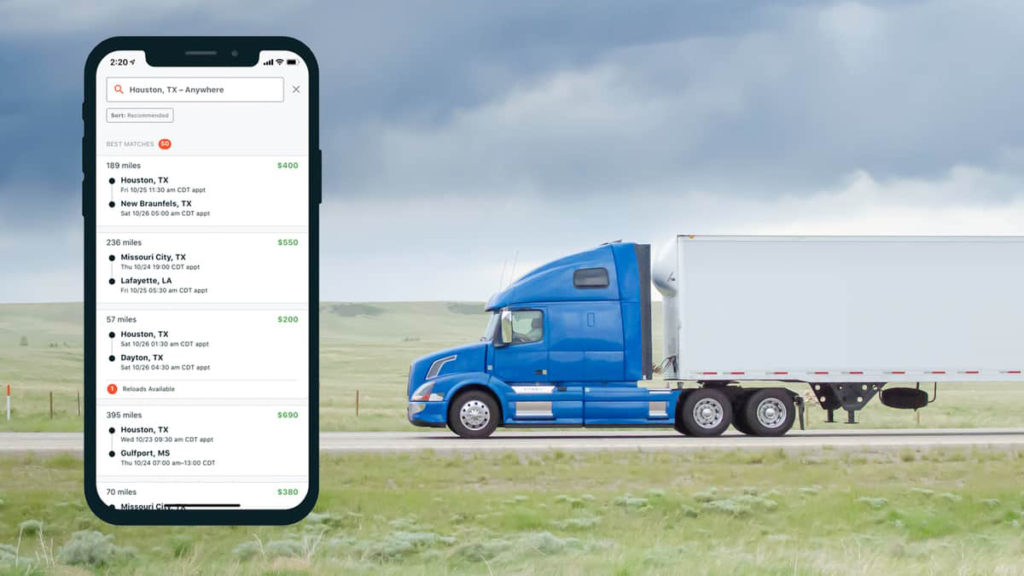
The Challenges
Shipping is a complex process that involves many moving parts. It is affected by various factors such as fluctuating demands, fuel prices, accessibility issues, and more. These challenges can make it difficult for businesses to maintain a consistent and reliable shipping strategy.
Fluctuating Demand: The demand for goods can fluctuate depending on various factors such as seasonality, market trends, and more. This can make it challenging for businesses to plan their shipping strategy.
Fuel prices: Fuel prices can be volatile and can have a significant impact on shipping costs. Businesses need to keep an eye on fuel prices and adjust their shipping strategy accordingly.
Access Issues: Some areas may be difficult to access, which can make it challenging to deliver goods. This can be due to various factors such as weather conditions, road closures, and more.
Capacity constraints: Capacity constraints can be a significant challenge for businesses, especially during peak seasons. Businesses need to ensure that they have enough capacity to meet their shipping needs.
Traditional vs Digital road freight marketplace:
Traditional marketplaces heavily rely on manual processing that causes limited visibility, ultimately leading to operational and cost inefficiencies.
A digital freight marketplace or network utilizes technology to connect shippers with a vast network of independent carriers. An open marketplace system keeps the rates competitive and allows the shippers to maximize their capacity benefitting from the huge network even under volatile circumstances. By automating many of the mechanical, repetitive tasks across the shipment lifecycle via a digital marketplace, the logistics teams can invest more time and energy in solving more strategic transportation challenges.
Leveraging a Digital Road Freight Marketplace or NetworkA digital road freight marketplace is an open, fully connected marketplace that utilizes machine learning, automation, and AI to efficiently connect shippers and carriers. By design, as shipment volume increases across the network, trucks are better utilized, costs are reduced, and the technology adoption leads to better prices and higher quality of service.
How does a digital road freight marketplace work:
A digital freight network efficiently connects shippers and carriers by using machine learning and automation, benefitting both sides as the market expands. As more shippers join the network, drivers have better options, fewer empty miles, and fewer wasted hours, allowing them to earn more per day. As more carriers join the network, shippers’ capacity increases, allowing them to maximize scalability and achieve lower operational costs and higher efficiency.
Leveraging a digital marketplace:
In the modern era of logistics, traditional freight marketplaces fall short because of the ever increasing demands of a volatile market and the increasing complexity of the globalized supply chain. More than ever shippers need to be equipped with visibility, foresight, and control over their operations. A 2016 study by LaneAxis found that the largest asset carriers outsource over 40% of their freight to smaller carriers. Digital freight marketplaces have become a viable option for shippers and businesses as compared to traditional marketplaces.
Gartner reported, “Digital freight networks are helping shippers overcome COVID-19 challenges by delivering the reliability of an asset-based carrier and the flexibility of a broker.” Since its inception, Truck It In has established itself as the leading digital road freight marketplace in Pakistan with a mission to simplify the road freight across the country. Here are 5 ways how a digital marketplace can maximize your shipping capacity and streamline operations;
1. Flexibility & Cost efficiency
One of the key advantages of using a road freight marketplace is that it allows businesses to maintain flexibility. Businesses can choose from a wide range of carriers, enabling them to find the carrier that best meets their shipping needs. This allows businesses to adjust their shipping strategy quickly and easily, depending on market demands, fuel prices, and other factors.
Another key benefit a digital freight network offers is reduced costs as it automates the load matching, pricing, and scheduling of trucks to shipments, that drastically reduces the cost structure and the time it takes to find the most efficient truck for every load.
2. Maximize Scalability
Another advantage of using a road freight marketplace is that it allows businesses to maximize scalability. Businesses can quickly scale up or down their shipping needs, depending on demand. This scalability enables businesses to meet their shipping needs without having to worry about capacity constraints.
3. Diversify Risks and Fleet Movements
Using a road freight marketplace allows businesses to diversify their risks and fleet movements. Businesses can choose from a wide range of carriers, enabling them to spread their shipping needs across multiple carriers. This diversification reduces the risk of relying on a single carrier and ensures that businesses can meet their shipping needs even if one carrier is unavailable.
4. Diversification:
Using a road freight marketplace allows businesses to diversify their risks and fleet movements, reducing the risk of relying on a single carrier. A digital freight network ensures all loads are available to all carriers at all times, so that the most efficient option is always available. Being able to match any truck to any shipment creates a more efficient network.
5. Transparency through insights:
Digital freight network uses data science, deep learning, and machine learning to collect data points to generate real time insights and provide transparent visibility into freight operations. Real-time insights offer enhanced visibility and transparency, empowering shippers to make informed decisions and optimize their supply chain operations.Truck It In is successfully harnessing the power of real-time insights and analytics to drive transport efficiency. By analyzing historical data and market trends, Truck It In uses predictive analytics to forecast demand. This helps our partners to allocate resources effectively and ensure timely deliveries.
Importance of Digitally Enabled freight marketplace and Integrated Supply Chains
According to Retail Dive, over 20% of online purchases are returned. Integrated supply chain and logistics services can include returns management and streamline this side of the operations for the shippers. Another Shopify survey revealed 62% of customers expect an exchange or refund within 30 days. If the returns experience is good, 92% of customers said they would buy from that business again. Integrated supply chain and logistics partners can help a business, by receiving the return at a suitable warehouse where it can be stored until it is ready to be picked up for a new order ultimately enhancing consumer satisfaction.
Conclusion
To ensure customer satisfaction and competitiveness in an unpredictable and volatile market, shippers need to be well equipped to manage the risks and navigate these uncertainties. Digital freight marketplace and integrated logistics empower shippers with complete operational efficiency and transparency across their supply chains, giving them the insights they need to respond proactively.
These benefits can be further enhanced by improving efficiency, reducing costs, and improving customer service. By leveraging these tools, businesses can stay ahead of the competition and meet the ever-changing demands of the market.
Visit our website to learn more about how Truck It In is simplifying road freight in Pakistan through a digital road freight marketplace.
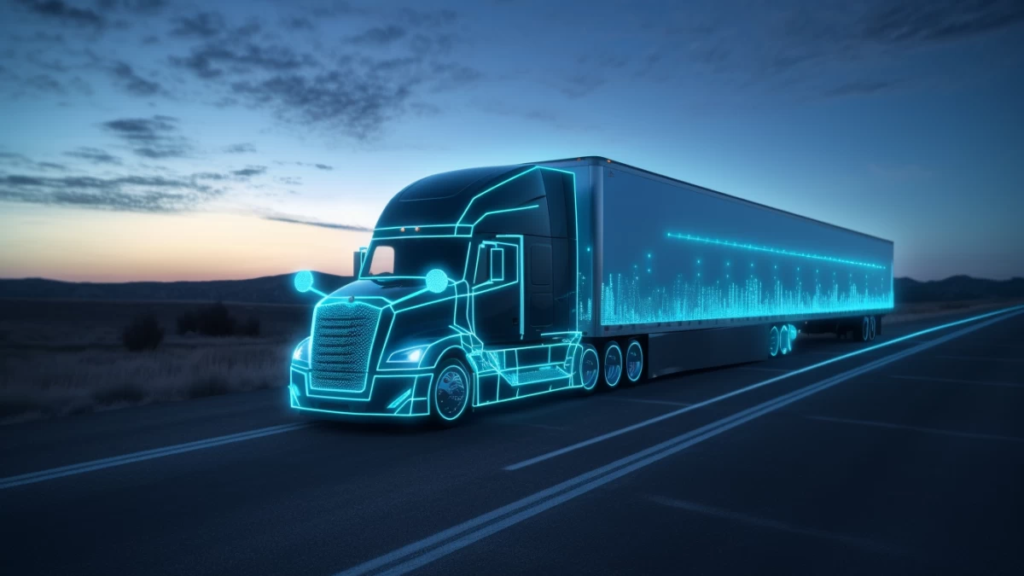
The trucking industry is on the brink of a significant transformation as we step into a new era marked by technological advancements and evolving consumer demands. With each passing year, the landscape of trucking continues to evolve, presenting new opportunities and challenges that will shape the industry in the next 5-10 years. Let’s take a closer look at these changes and how they align with the latest statistics in this blog.
Autonomous Trucks Take Center Stage
One of the most anticipated advancements in the trucking industry is the widespread adoption of autonomous trucks. Over the next decade, we can expect to see more autonomous trucks hitting the roads, revolutionizing long-haul transportation. These self-driving vehicles have the potential to enhance safety, increase efficiency, and reduce operational costs. According to recent statistics, the global autonomous truck market is projected to grow from $33 billion in 2023 to $67.73 billion by 2030, exhibiting a CAGR of 10.8% during the forecast period.
While fully autonomous trucks might still be a few years away, we can expect to witness the gradual integration of autonomous features that assist truck drivers and improve overall logistics operations. This development is crucial as the shortage of truck drivers is adding to global supply chain challenges. In the US, the shortage of truck drivers was at an all-time high of 80,000 in October 2021, and the shortfall might increase to more than 160,000 drivers by 2030, according to the American Trucking Associations.
Electrification and Sustainability
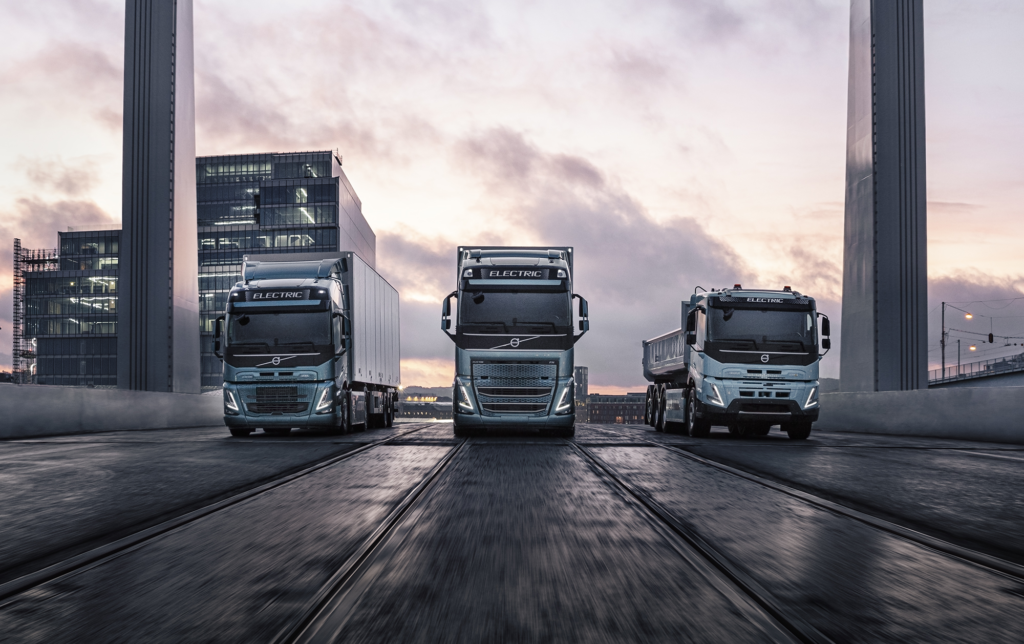
As environmental concerns take center stage globally, the trucking industry is also embracing sustainability. Electric trucks are poised to become more prevalent in the coming years as advancements in battery technology and charging infrastructure make electric vehicles (EVs) more viable for long-haul transportation. The shift towards electric trucks will not only reduce carbon emissions but also lower operating costs, making it a win-win for both the industry and the environment.
In Pakistan, the government’s electric vehicle policy aims to convert 30% of all vehicles to electric by 2030, which will also impact the adoption of electric trucks in the country.
Connectivity and IoT Revolutionize Fleet Management
The Internet of Things (IoT) is transforming industries across the board, and trucking is no exception. In the next 5-10 years, we can expect to see the widespread adoption of IoT devices and connectivity solutions in trucks and trailers. These IoT-enabled devices will provide real-time data on various aspects such as fuel efficiency, vehicle health, and driver behavior, allowing for more informed decision-making and proactive maintenance.
Fleet managers in Pakistan, inspired by the government’s push for technological advancements, will have unprecedented visibility and control over their operations, leading to improved efficiency and reduced downtime.
Big Data and Analytics for Enhanced Logistics
The trucking industry generates vast amounts of data every day. In the future, harnessing this data through big data analytics will become crucial for optimizing logistics operations. Advanced analytics will help in route optimization, load planning, and predictive maintenance, leading to cost savings and increased efficiency. Moreover, data-driven insights will enable trucking companies to provide more accurate delivery estimates and improve overall customer experience.
Truck It In is at the forefront of this data revolution, leading the charge in data analytics and data-driven insights. Through our cutting-edge analytics systems, we leverage this wealth of data to provide our clients with unparalleled visibility and efficiency in their operations. Our commitment to harnessing data for the benefit of our clients ensures that we stay ahead of industry trends and deliver top-notch service.
Blockchain for Secure and Transparent Transactions
Blockchain technology is set to revolutionize the trucking industry by providing secure and transparent transactions. Smart contracts on the blockchain will streamline payments and documentation processes, reducing administrative burdens and eliminating disputes. With blockchain, trucking companies can create an immutable and tamper-proof record of every transaction, ensuring trust and efficiency throughout the supply chain.
Last-Mile Innovations for Urban Delivery
The rise of e-commerce has fueled the demand for last-mile delivery solutions, particularly in urban areas. Over the next decade, we can expect to see significant advancements in last-mile innovations, such as the use of electric cargo bikes, drones, and robotic delivery vehicles. These solutions will address the challenges of congested urban areas, reduce emissions, and offer faster and more efficient delivery options for consumers.
Driving Toward Tomorrow: The Exciting Future of the Trucking Industry

The future of trucking holds immense promise, with exciting technological advancements and sustainability efforts on the horizon. Embracing these changes will be essential for trucking companies to stay competitive and thrive in the dynamic landscape of tomorrow. As we look ahead, it’s evident that the future of trucking is bound to be smarter, greener, and more efficient than ever before.
Ready to explore more about the future of trucking and how Truck It In is leading the way? Visit our website to learn more or check out our other insightful blogs for valuable industry insights.